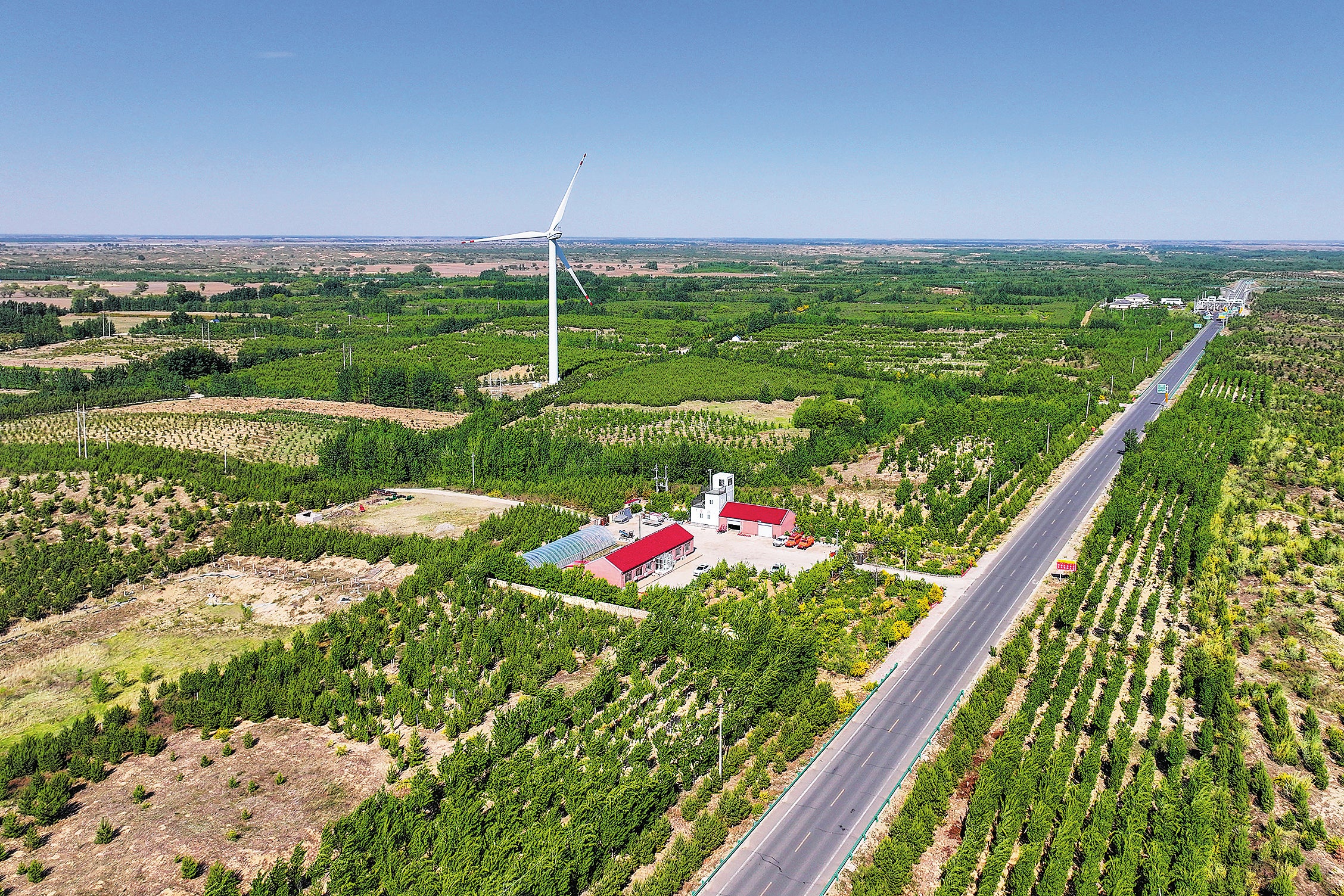Beating back the desert
THE ARTICLES ON THESE PAGES ARE PRODUCED BY CHINA DAILY, WHICH TAKES SOLE RESPONSIBILITY FOR THE CONTENTS

When it comes to deserts, China may be one of the last countries most people would think of, but in fact it has more varieties of deserts than any place on the planet.
Nearly 18 per cent of the country’s land mass, 652,500 square miles, is classified as desertified.
Covering vast swaths of the northwest, north and northeast of the country, the threat of the deserts and their spread has existed for centuries.
However, several generations of hardworking and dedicated Chinese people have made it their raison d’etre to push back these deserts. They have done so by thinking outside the box, or grid, planting trees and shrubs, and creating a green Great Wall that spreads across 13 provinces and autonomous regions in northern China and protects more than 370 million acres of farmland.
In the 1950s China was considered one of the most desertified countries, with places such as Zhangwu county in Liaoning province in the northeast of the country consisting of 90 per cent sandy area.
In 1978 the central government made a significant decision to implement the Three-North Shelterbelt Programme to fight against desertification. Since then more than 45 per cent of the desertified land has been controlled, 61 per cent of the soil erosion area has been managed, and the forest coverage rate has risen from just over 5 per cent to 13.84 per cent.
Lu Qi, head of the Three-North programme research institute, said: “Each desertification control project is now planned based on the conditions and resources of different areas backed by research findings, and a consensus has been formed that the goal of desertification control is to ensure that people’s lives and development will not be threatened by deserts, which also need to be protected because they are essential parts of the ecological system.”
Dang Hongzhong, a researcher at the Chinese Academy of Forestry and the Three-North programme research institute, said: “The key to China’s success in its path of sand prevention and control lies in scientific decision-making and planning.”
The innovative action taken in Zhangwu county in the 1950s was a step forward in sand control, Dang said.

In 1952 Zhangwu established China’s first sand control research institute, with Liu Bin as its director. Liu and other pioneers in sand control decided to introduce the Mongolian Scots pine from the Greater Hinggan Mountains to control sandy areas.
“In traditional thinking, shrubs or grasses should be used to control shifting sandy areas, and planting trees on shifting sand dunes went against the laws of nature,” Dang said. “The old experts were not bound by traditional rules, made bold breakthroughs and embarked on an innovative path that no one had expected.”
Although they had found a drought-resistant tree species, planting trees on shifting sandy land was challenging.
“Zhangwu was eight latitudes away from the original habitat of the Mongolian Scots pine, making the introduction difficult,” said Zhang Xueli, deputy director of the Research Institute of Sand Control and Utilisation in Liaoning province.
Liu and other sand control pioneers imported Mongolian Scots pine for three years. In the first year, almost all the saplings perished.
“The experts later found that in their original habitat, the Mongolian Scots pine was covered by thick snow in winter, providing insulation and moisture retention.
“However, Zhangwu is very dry in winter and spring, with strong winds, and only two saplings that were accidentally buried by sand survived,” Zhang said.
Learning from that experience, researchers covered the next batch of planted pines with sand and soil. Those pine trees survived the winter, growing into the oldest existing forest in the sandy area.
Over the past 70 years the forest coverage rate in Zhangwu has risen from less than 3 per cent to more than 30 per cent, and more than 8,500 forestry technicians have spread the expertise of afforestation and sand fixation to more than 10 provinces, resulting in more than 2.4 million acres of forests being planted.
In addition to the Mongolian Scots pine, nearly 500 plant species that can be used as windbreaks and for sand fixation have been identified in China’s sand control practice over the decades.
